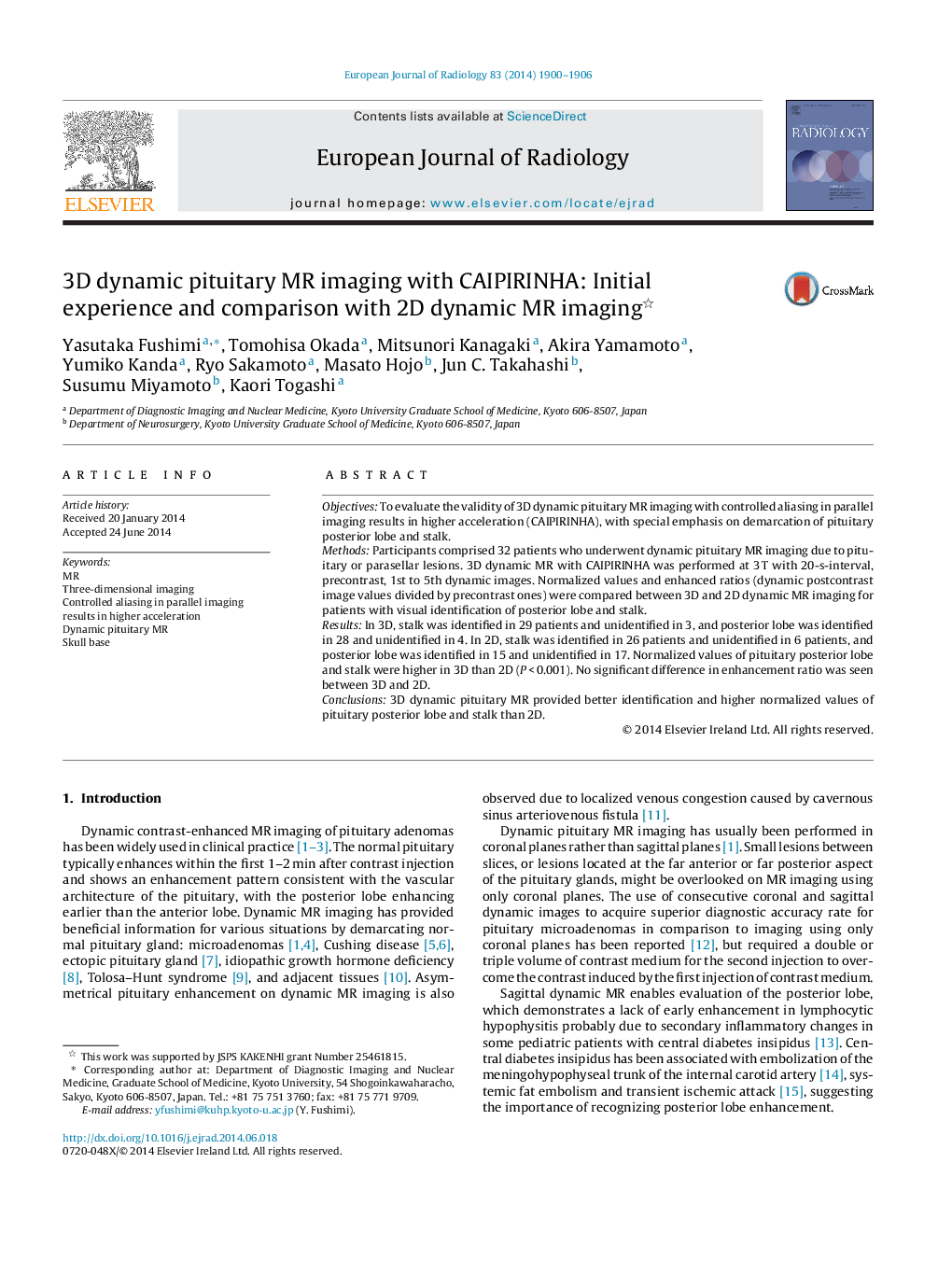| Article ID | Journal | Published Year | Pages | File Type |
|---|---|---|---|---|
| 4225377 | European Journal of Radiology | 2014 | 7 Pages |
ObjectivesTo evaluate the validity of 3D dynamic pituitary MR imaging with controlled aliasing in parallel imaging results in higher acceleration (CAIPIRINHA), with special emphasis on demarcation of pituitary posterior lobe and stalk.MethodsParticipants comprised 32 patients who underwent dynamic pituitary MR imaging due to pituitary or parasellar lesions. 3D dynamic MR with CAIPIRINHA was performed at 3 T with 20-s-interval, precontrast, 1st to 5th dynamic images. Normalized values and enhanced ratios (dynamic postcontrast image values divided by precontrast ones) were compared between 3D and 2D dynamic MR imaging for patients with visual identification of posterior lobe and stalk.ResultsIn 3D, stalk was identified in 29 patients and unidentified in 3, and posterior lobe was identified in 28 and unidentified in 4. In 2D, stalk was identified in 26 patients and unidentified in 6 patients, and posterior lobe was identified in 15 and unidentified in 17. Normalized values of pituitary posterior lobe and stalk were higher in 3D than 2D (P < 0.001). No significant difference in enhancement ratio was seen between 3D and 2D.Conclusions3D dynamic pituitary MR provided better identification and higher normalized values of pituitary posterior lobe and stalk than 2D.
